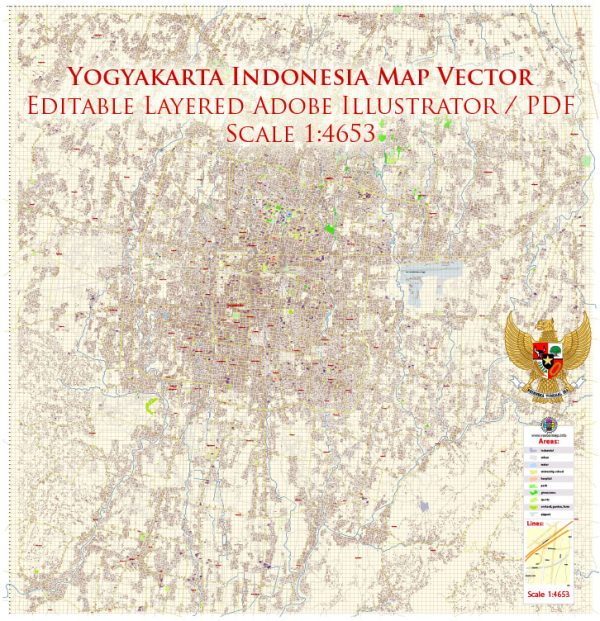Yogyakarta, often simply referred to as Jogja, is a city located on the island of Java in Indonesia. It is known for its rich cultural heritage, which is reflected in its architecture. Here is a description of the architecture in Yogyakarta:
- Javanese Architecture: Yogyakarta is a stronghold of traditional Javanese architecture, which is heavily influenced by the local culture and history. Traditional Javanese buildings are often constructed using natural materials like wood and bamboo, with intricate carvings and detailed ornamentation. This architecture style is characterized by the use of joglo and pendopo structures, which feature steep, tiered roofs with intricately carved eaves and columns.
- Kraton and Palaces: Yogyakarta is famous for its kraton, or royal palace, known as the Kraton Ngayogyakarta Hadiningrat. The palace complex is a prime example of Javanese architecture, featuring ornate wooden structures with fine carvings and courtyards adorned with traditional batik and wayang (shadow puppet) decorations. It is a symbol of Yogyakarta’s royal heritage and a significant architectural landmark.
- Temples: Yogyakarta is home to several ancient temples, including Borobudur and Prambanan. Borobudur is the world’s largest Buddhist temple and is an outstanding example of Indonesian architectural heritage. It is a massive stone structure with a series of tiered platforms and stupas adorned with detailed reliefs. Prambanan, on the other hand, is a Hindu temple complex with tall, pointed spires and intricate stone carvings.
- Joglo Houses: Traditional Javanese houses, known as joglo houses, can be found throughout Yogyakarta. These houses are constructed using teak wood and feature the distinctive joglo roof design, which is characterized by a series of stacked, curvilinear roofs. Joglo houses are known for their open-air layouts, intricate wooden carvings, and pavilion-style architecture.
- Sultan’s Water Palace: Taman Sari, also known as the Water Castle, is a unique architectural site in Yogyakarta. It was built as a royal garden and bathing complex and features a mix of Javanese and European architectural elements. The complex includes underground tunnels, bathing pools, and pavilions with distinct architectural styles.
- Modern Architecture: In addition to its historical and traditional architectural treasures, Yogyakarta has seen the development of modern buildings and structures in recent years. The city’s architecture has evolved to include contemporary designs in commercial buildings, hotels, and educational institutions.
Yogyakarta’s architecture is a blend of ancient traditions, rich cultural influences, and modern developments. It reflects the city’s deep connection to its Javanese heritage and serves as a testament to its historical significance as a cultural and royal center in Indonesia.


 Author: Kirill Shrayber, Ph.D.
Author: Kirill Shrayber, Ph.D.